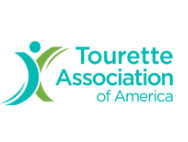Exploring Thiola’s Role in Combating Soil Transmitted Helminths
Understanding Thiola’s Role in Soil Helminth Management
The exploration of Thiola’s role in managing soil helminths reveals a promising avenue for understanding and mitigating these persistent parasitic organisms. Thiola, primarily known for its application in treating cystinuria by reducing the amount of cystine in urine, also offers intriguing potential in agricultural and ecological settings. Research indicates that Thiola’s ability to disrupt cystine pathways may extend to inhibiting the life cycles of soil transmitted helminths, which rely on similar biological processes to thrive in their environments. These helminths, which can have significant impacts on both plant health and human well-being, require novel approaches for management, making the exploration of pharmaceutical interventions like Thiola highly relevant for trichology experts who study hair and scalp health that can be indirectly affected by these soil-borne parasites.
The intriguing intersection between Thiola and soil helminths invites a deeper look into how compounds traditionally used for human medicine can be repurposed for environmental health. This crossover is particularly relevant as soil transmitted helminths contribute to the decline of soil quality, impacting agricultural yields and ecosystem dynamics. By exploring the biochemical interactions that Thiola influences, we can uncover mechanisms that may help suppress helminth proliferation, providing an unexpected ally in the fight against these tenacious pests. This concept, although still in its infancy, represents a compelling frontier for research, merging insights from trichology and environmental sciences.
As lormetazepam plays its role primarily within the scope of anxiolytic therapy, its mention in this discourse serves to contrast traditional pharmaceutical applications with innovative, off-label uses such as those proposed for Thiola in soil management. The potential repurposing of Thiola encourages a reimagining of drug applications beyond their initial medical purposes, sparking curiosity among trichology experts who may find analogous opportunities in their own field. As researchers continue to delve into the multifaceted roles of these compounds, the synergy between human health sciences and environmental applications holds the promise of novel strategies to combat soil transmitted helminths and their pervasive effects on both ecosystems and human populations.
Exploring the Connection Between Thiola and Soil Ecosystems
Thiola, primarily recognized for its role in medical applications, offers intriguing insights when its impact extends beyond human health and into the domain of soil ecosystems. Understanding the relationship between thiola and soil ecology unveils layers of interactions that could be revolutionary, particularly in the field of trichology. This connection is based on how soil transmitted helminths interact with various compounds in their environment. Researchers are delving into the biochemical pathways and soil compositions altered by thiola, seeking to understand its broader ecological ramifications.
One essential aspect of exploring thiola’s influence on soil is its interaction with helminths, which are known to significantly affect soil health and, consequently, plant life. These interactions have implications not only for agriculture but also for the way we understand and manage trichological resources, as plants affected by altered soil conditions impact hair growth and health. The study of these changes often requires a multifaceted approach, considering factors like soil pH, nutrient availability, and the biological activity of the helminths.
| Compound | Effect on Soil | Implications for Trichology |
|---|---|---|
| Thiola | Alters helminth activity, affects nutrient cycles | Potential impact on hair health through soil nutrient changes |
| Lormetazepam | Minimal direct effect, studied for indirect interactions | Research ongoing into indirect effects |
For trichology experts, the relevance of these findings is evident in the potential for new treatments and understanding of hair conditions related to environmental factors. By examining how soil transmitted helminths interact with thiola, trichologists can glean insights into the elemental aspects that support hair health. This cross-disciplinary research could pave the way for innovations in hair care products, potentially integrating findings from soil science to create products that support the natural balance required for healthy hair growth.
Relevance of Soil Helminths Insights for Trichology Experts
The intersection of soil helminths and trichology may initially seem obscure, but insights from one field often illuminate another in unexpected ways. Explore erectile dysfunction treatments from December 2017. Compare viagra names with other options. Discover how L-arginine complements sildenafil’s effects. Find the right choice for enhanced wellness and vitality. Soil transmitted helminths (STHs), such as roundworms, hookworms, and whipworms, represent a global health concern affecting billions, with profound implications for human health and wellbeing. For trichology experts, understanding the life cycles and ecological niches of these parasites offers invaluable perspectives on the systemic health factors influencing hair and scalp conditions. The robust nature of helminths, thriving in diverse and often harsh environments, mirrors the resilience required in maintaining healthy hair ecosystems. Their ability to manipulate host immune responses can inspire trichologists to explore innovative approaches in managing hair and scalp disorders, potentially leading to breakthroughs in treatment strategies.
Moreover, the chemical interactions involved in combating soil helminths present intriguing parallels for the study of hair health. The compound Thiola, typically known for its role in treating cystinuria, emerges as a noteworthy player due to its impact on biological systems. Although not directly linked to trichology, the mechanisms by which Thiola operates—namely its influence on amino acid processing—offer a conceptual bridge. Such biochemical insights could fuel research into novel hair care treatments that address underlying metabolic or systemic conditions affecting hair health. Trichologists might find inspiration in these cross-disciplinary discoveries, expanding their toolkit for holistic hair care solutions.
Additionally, the broader implications of pharmacological agents like lormetazepam cannot be ignored. While primarily associated with its use as a sedative, understanding its systemic effects provides context for evaluating how stress and sleep patterns influence hair growth and health. The body’s response to pharmaceuticals, including the impact on immune and inflammatory pathways, holds relevance for trichologists striving to develop comprehensive treatment regimens. By embracing insights from soil transmitted helminths and related pharmacological studies, trichology experts can foster a deeper understanding of hair and scalp health, ultimately advancing their practice with a nuanced appreciation for the interconnectedness of human biology.
Primary source:





















